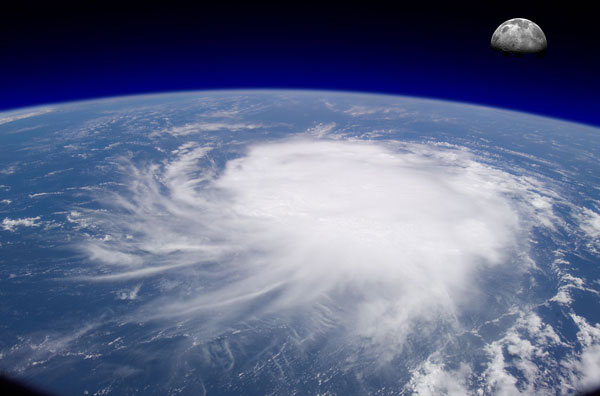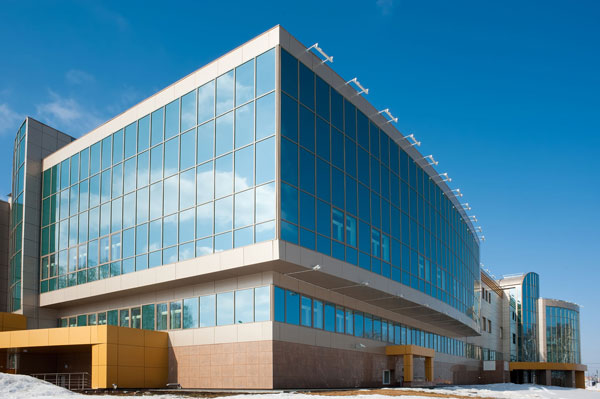
Climate change already has real and immediate effects on facilities in the US and around the world.
According to the National Oceanic and Atmospheric Administration, the United States has experienced significant amounts of damage from an increasing number of severe weather events. In 2016, there were 15 weather and climate events with losses exceeding $1 billion each across the United States, including drought, wildfire, inland flood events, severe storm events and a tropical cyclone event. Charles Riley at CNN Money reports that the global cost for natural disasters in 2016 was $175 billion.
Such numbers highlight the need for facilities managers to be aware of the potential for natural disasters due to climate change and the cost implications that could affect their facilities.
The FM’s Role in Climate Change Preparations
The logistical and financial burden of sustaining operations throughout severe weather events is a threat to any business’ sustainability. Facilities managers must assess and prepare any facilities and assets to withstand natural disasters. As Edward Sullivan points out, climate change is a driving force behind facilities managers’ need to transform buildings to withstand severe weather events.
As Chuck Miccolis, senior engineering manager at the Insurance Institute for Business & Home Safety, tells Facilitiesnet, "Many businesses are not prepared for man-made or natural disasters, and statistics show that of businesses that do close because of disaster, at least one in four never re-opens."
This is a scary statistic for any business, and it emphasizes the need for preparation. But, according to a study by Clive M.J. Warren at the University of Queensland Business School, facilities managers are falling behind on disaster planning and need to change their thinking to be proactive in risk assessment and planning.
Tunde Obileye of Great Heights Property and Facilities Management Limited says FMs can be proactive by doing three things to prepare for extreme weather events:
- Conduct risk assessments of facilities and assets to understand how they will respond to climate change.
- Support the development of new structures that will respond to climate change.
- Develop disaster plans for proactive approaches to natural disasters.

How Do You Make a Facility Resilient to Changing Weather?
A joint 2014 study by the IFMA and RLE Technologies found that “1 in 5 (19 percent) of the surveyed organizations did not have an up-to-date emergency preparedness/business continuity plan,” at a time when climate change effects are having greater impacts on business continuity.
As Karin Holland at Haley & Aldrich points out, with severe weather increasing around the world due to climate change, facilities can’t afford to wait to begin resilience planning. This is a wake-up call for businesses to make emergency preparedness a priority, and facilities managers should be at the forefront of resilience planning. But you shouldn’t plan only for events similar to those your facilities have already experienced. The Resilient Design Institute says it is crucial to plan for future climatic conditions rather than simply referencing past data.
There is no shortage of resources available to facilities managers to help guide you through the process of resilience planning:
- Holland has one at Facilitiesnet titled “10 Key Steps to Resilience Planning.”
- Facilities Management eXpress has a helpful guide titled “How to Prepare Your Facilities for Disaster.”
- The IFMA/RLE Technologies report “High Stakes Business: People, Property & Services” is also a great start.
Any of these lists can be broken down into three key areas of resilience planning: risk assessment, ideal state of preparedness and emergency plan development. Let’s take those one-by-one.
1. Risk Assessment
The first part of resilience planning is risk assessment, which involves reviewing whether buildings and assets are in areas likely to be affected by climate change. For example, are generators and fuel supply pumps off the ground so they can work in case of flooding? Will buildings shield against extreme temperature changes? How reliable are power and other critical equipment?
In assessing facilities and assets, keep these questions from the United States General Services Administration’s (GSA) Sustainable Facilities Tool Workshop Process in mind:
- What are the climate/weather-related impacts on facilities and assets? Observe the expected and unexpected changes in climate and extreme weather for your area.
- Are there any critical thresholds of the asset?
- Are any actions being taken to manage impacts?
- If so, are they identified in any plans? Who then takes responsibility for those actions’ completion?
Multiple industry sources suggest using a risk matrix to use to evaluate the potential emergencies your facility may face. A risk matrix is easy to create, and will include these basic pieces of information, captured from the GSA workshop matrix:
- Likelihood of impact: Low, moderate, high or virtually certain/already occurring
- Magnitude of consequence: Low (little to no interruption to critical services and operations), moderate (some disruption that is easily repaired) or high (significant and likely prolonged disruptions)
Apply this matrix to each facility or asset to evaluate risk from climate change or a weather-related event.
2. Ideal State of Preparedness
The National Electrical Manufacturer’s Association (NEMA) explains that once the risk assessments are complete, businesses must determine their “desired state” or the “desired operational or mission capacity” during critical events, as well as an associated cost-benefit analysis relative to the desired state.
This ideal state of preparedness involves making changes to facilities and assets so that they can withstand extreme events, including natural disasters, and can continue to operate. When determining maximum reliability of facilities and systems, consider the type of facility, what equipment is critical to desired operations and where the equipment will be located.
One change businesses are making is to the use of building automation systems. These are being used by facilities managers to help ensure business continuity in case of unpredictable events. According to Buildings.com, smart buildings not only operate more efficiently on a regular basis, but can be keys to operating continuity during a weather-related event.
Jana J. Madsen notes that some building automation systems allow you to integrate weather data so you can control how your facilities react to weather, which helps to optimize building systems and ensure continuity.
3. Emergency/Continuity Plan Development
After you have completed a risk assessment and determined your ideal state of preparedness, you must develop an emergency plan that accounts for all assets, both people and property, in the event of a weather-related emergency.
Robert Lang, CPP suggests that the emergency plan should be an action plan, not only a guidebook. It should identify all hazards facing the facility and provide a comprehensive breakdown of everyone’s responsibilities related to each crisis. It is crucial to regularly review and update the emergency plan to keep all of the contact names and information current.
More important than simply creating a plan is testing the plan, making it as realistic as possible, says Casey Laughman. You may not be able to test every operation and system realistically, but you can work with first responders and employees to have tests outside of peak business hours. Be sure to keep a detailed log of the tests you did perform, the limitations and the outcomes. From those results, you can prepare for a real emergency.
Having a continuity plan in place in case of emergencies is essential for a business to maintain functionality in the event of an emergency. As Laura Gilmer, P.E., vice president of facility services at Facility Engineering Associates, points out, “A lack of planning and a workforce trained to respond can lead to an inability to recover quickly, significant financial loss, and damage to the organization’s reputation.”

Continually Prepare for the Unexpected
Typical weather patterns are changing thanks to the effects of climate change. It isn’t enough anymore to plan for the usual, expected weather events. Businesses in the South may need to plan for earthquakes or tornadoes; those in the Midwest may need to plan for floods and blizzards; and companies in the North may need to account for droughts or hurricanes.
It is essential that facilities managers educate themselves on the global effects of climate change and the predicted changes to weather patterns. You then need to implement changes to buildings, assets, policies and procedures that affect the operations of the business so that the business can continue operating in adverse weather conditions.
Credits:
eintrachtlkyam
kadmy
